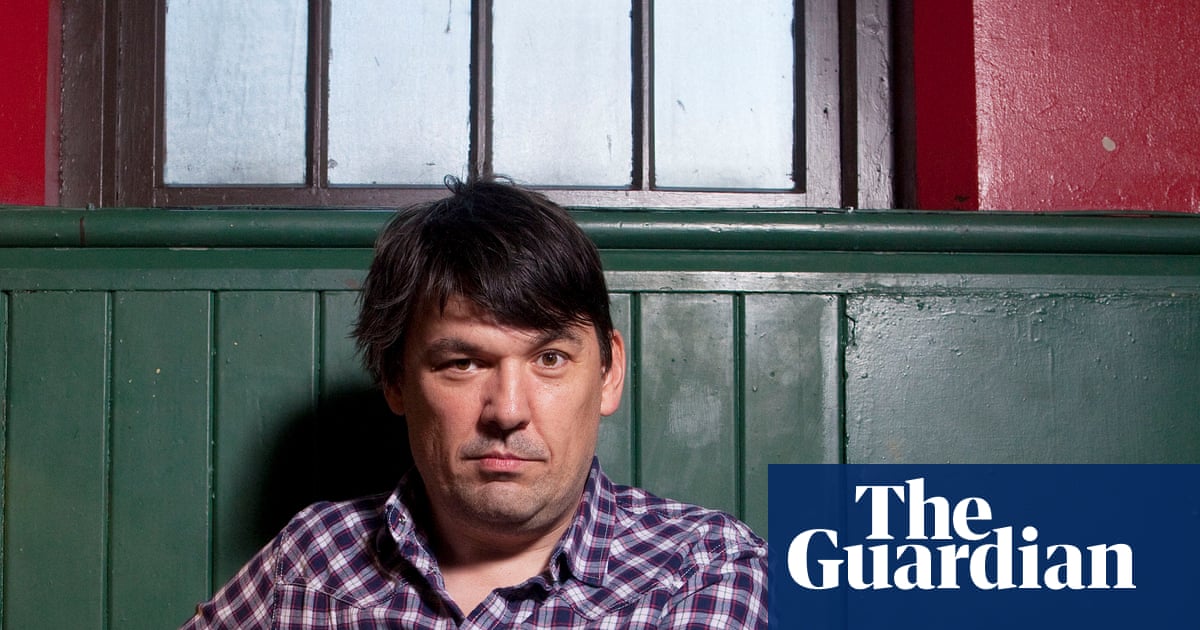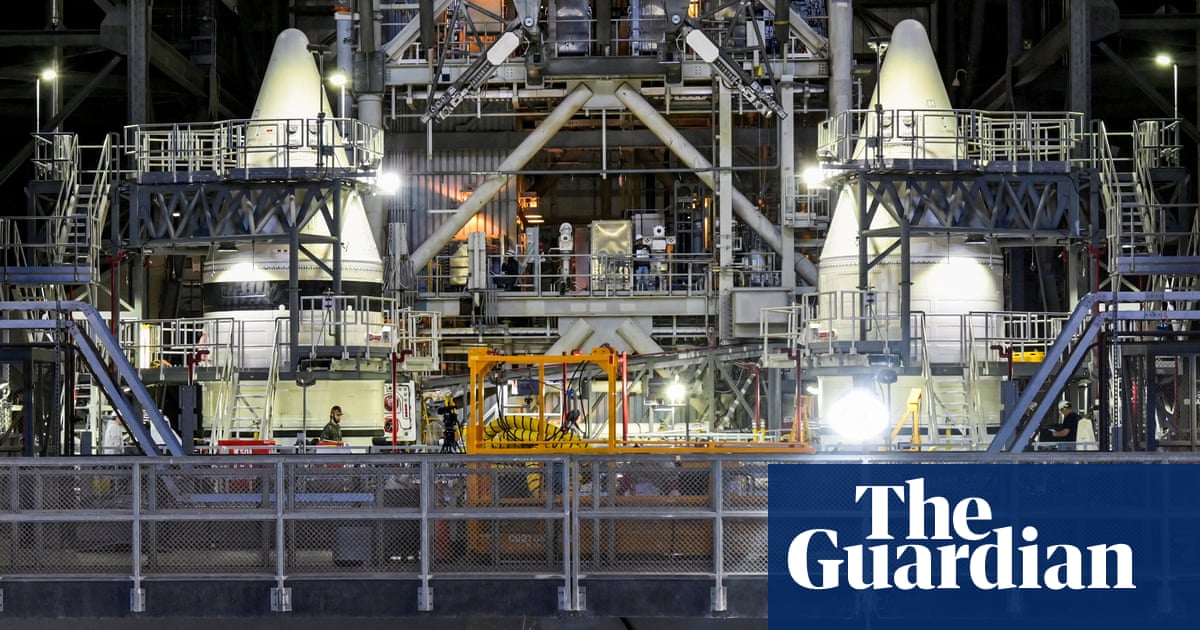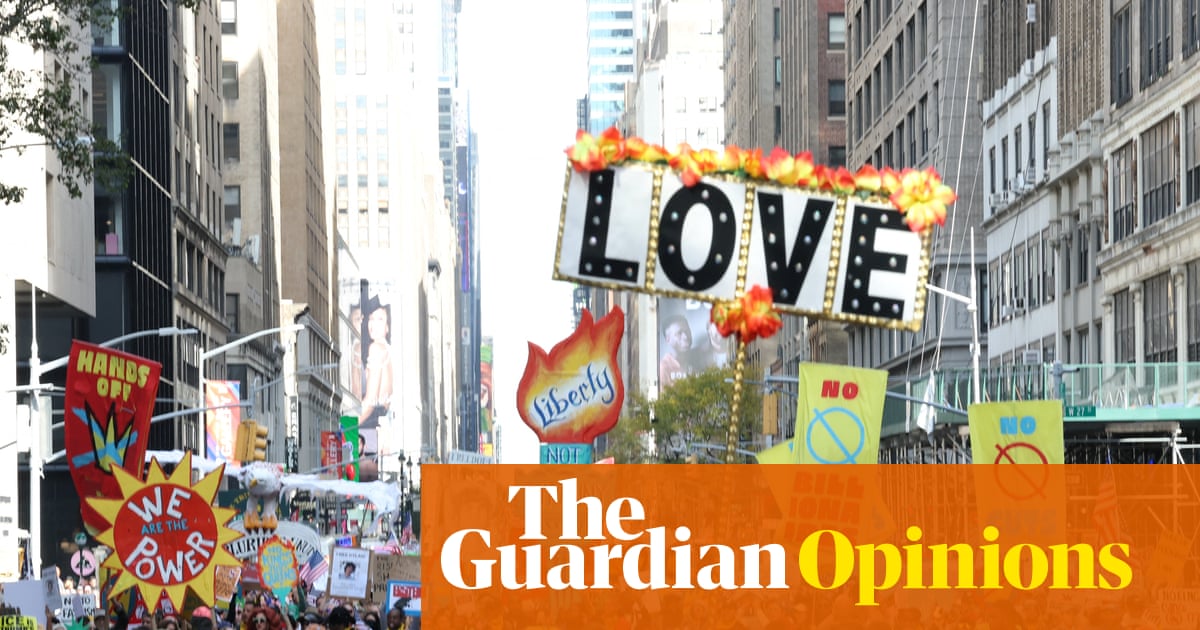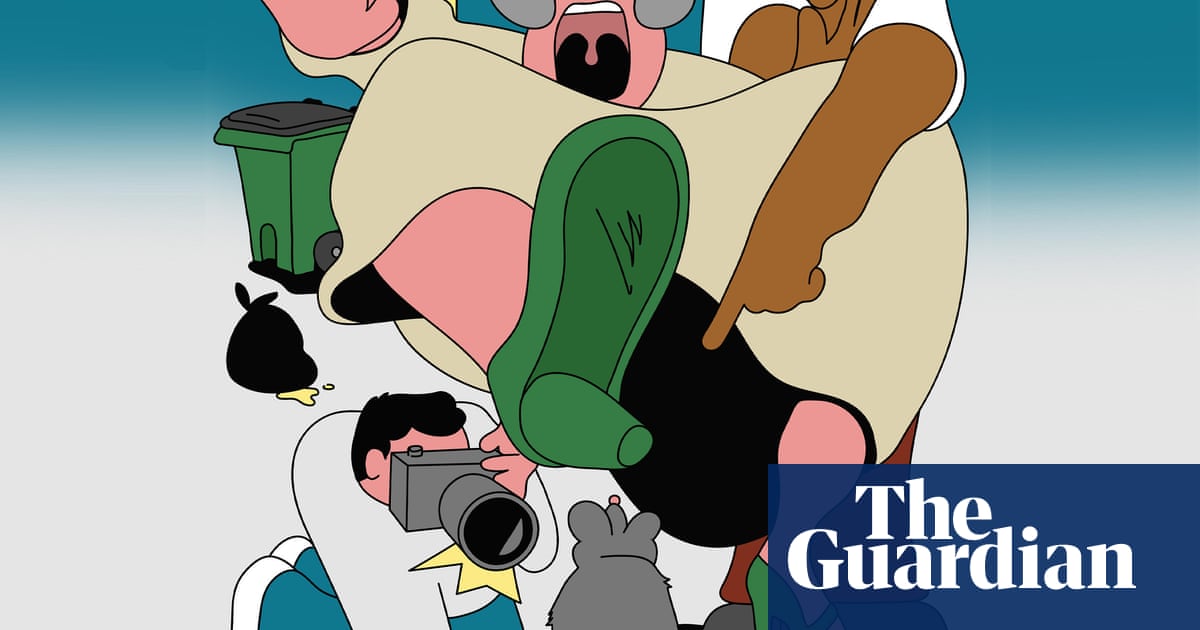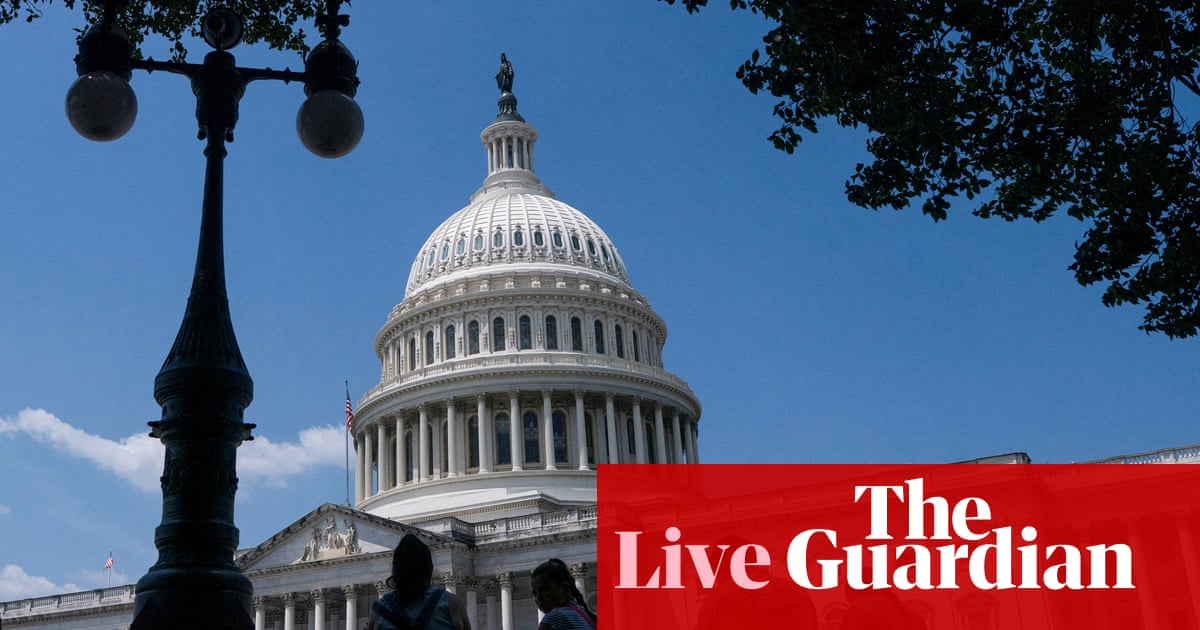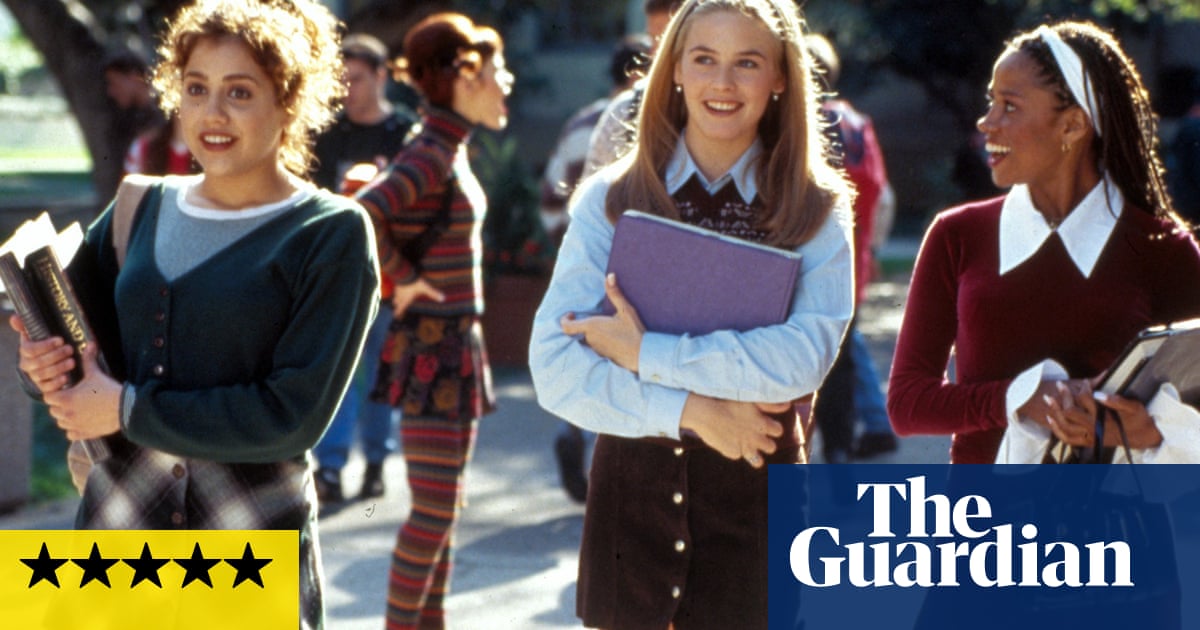Every Saturday, for the last 18 months, Shane Short has watched the same film: Christopher Nolan’s 2014 space epic Interstellar. He’s not even sure how many times he’s seen it now, though he does know he saw it 31 times in cinemas when it was briefly rereleased for its 10th anniversary in 2024. This year he has flown from his home in Hawaii to Melbourne to watch Interstellar projected on 1570 film at the city’s Imax – twice – where the regular screenings of Interstellar, even those held midweek and during the day, can reliably sell out in minutes.
Set in a future not that far from us now, Interstellar follows Cooper (Matthew McConaughey), a former Nasa test pilot turned farmer who leaves his children Tom (Timothée Chalamet) and Murph (Mackenzie Foy) behind on a climate-ravaged Earth to search space for a new home for mankind. Murph is furious with grief at Cooper for picking a future for humanity over a life spent with her; as the decades pass, Tom (played as an adult by Casey Affleck) settles into embittered detachment, while Murph (Jessica Chastain) becomes a scientist and works closely with Prof John Brand (Michael Caine), the Nasa scientist who sent her father away on his mission with his own daughter, Dr Amelia Brand (Anne Hathaway).
When Interstellar came out, critics picked at the plot holes, scientists picked at the science, and almost everyone mocked Hathaway’s speech about love. It was also infinitely memeable: one devastating scene, in which Cooper weeps after seeing Murph as an adult, has long been killed by internet irony.
But 11 years later, Interstellar is the internet’s favourite film. It is now the No 1 film on Letterboxd for number of fans (“tell me you wouldn’t cry too if your son grows up to be casey affleck”, reads one of the top-rated reviews). Hans Zimmer’s emotive organ soundtrack for the film is now so overused on TikTok and YouTube that it has become meaningless (“I can’t scroll on my phone for 30 seconds without hearing Cornfield Chase,” says Short).
And earlier this year, 500 film-makers, actors and critics ranked Interstellar 89th on The New York Times’ list of the 100 best movies of the 21st century – but when 200,000 NYT readers got their say, Interstellar shot up to No 5.
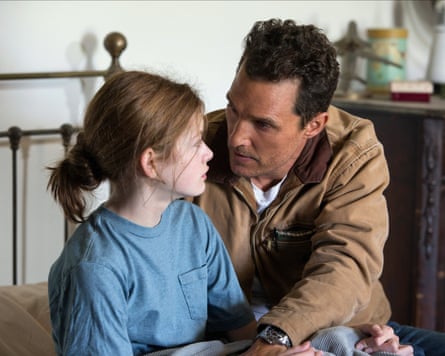
The initial hype for Interstellar was as big as the film’s wormhole, Gargantua – so much so, its starkly divided critical response became newsworthy.
“Mr. Nolan’s apocalyptic space adventure has crashed into the awards circuit amid sharp disagreement about its prospects, merit and meaning,” the New York Times wrote in 2014, adding that the “wildly mixed reception now finds the awards crowd slipping from budding consensus to near chaos”.
There were a couple of raves. “This is one of the most beautiful films I have ever seen,” Richard Roeper wrote in the Chicago Sun-Times, giving it four out of four stars; Empire gave it five. But Collider gave it C-, arguing Cooper and Murph’s relationship was “handled in such a calculated fashion that it has all the emotional pull of a math equation”. The Guardian’s Peter Bradshaw called it Nolan’s “biggest event, biggest spectacle, biggest pastiche, biggest disappointment”. Critic David Poland compared Interstellar’s first 110 minutes to “water torture”.
Even Short, 38, wasn’t that impressed with Interstellar when he first saw it in 2014; the ending confused him. But now he credits the film as having fundamentally changed who he is.
“A lot of things in Interstellar are very emotional for me,” he says. “I never really connected with that part of myself, and the movie has helped me. Like, I wasn’t on board to have kids at all. I wasn’t against it, I was on the fence. But after seeing the relationship between Cooper and Murph, I wanted that. It definitely changed my mind.”
“When I first saw Interstellar when it came out, I did not like it,” says Rina Chia, 60, who has seen it at least 10 times in cinemas and watches the Blu-ray at home. “I think a lot of people will have had that because it was so ahead of its time. I didn’t understand it, and I was too worried about understanding the story to appreciate the majesty of it all.”
But it was repeat viewings with one of her sons, an aspiring film-maker, that changed her mind: “I just grew to love it. Other space movies are all about an enemy, like Alien or Star Wars. But Interstellar is about love and emotion.”
“With this movie, once, twice, three times – it is not enough,” says 27-year-old Aaron Moore, who doesn’t know how many times he’s seen Interstellar, except that he’s seen it “at least” four times in Imax. “For me, it just doesn’t get old. I could flick on to any scene and just be captivated by it. It is a cinematic masterpiece.”

Nolan is a famously cerebral film-maker (his production company, Syncopy, is named for the temporary loss of consciousness caused by loss of oxygen to the brain). His films often have epistemological concerns; his heroes are usually (men) consumed by their need for answers, finding their way to a truth – usually about time, memory, dreams, the nature of existence.
Much of the appeal of Nolan’s films lays in his tangible trust that his viewers will be smart enough to follow him – even when his film has been inspired by the work of a theoretical physicist (in the case of Interstellar, Nobel laureate Kip Thorne). And follow him they do, despite some Gargantua-sized outstanding questions. (Why does Brand’s secret space trip not have a pilot until Cooper turns up? Why are only four people sent on a mission intended to save humanity? Why all the Christian Easter eggs?)
When we speak, Chia is about to attend a talk on quantum mechanics put on by RMIT University in Melbourne, which will be followed by – you guessed it – a screening of Interstellar. “I’m no science person, but watching a lot of space movies, particularly Interstellar, has piqued my interest in the quantum universe,” she says.
When she first saw Interstellar, she didn’t really understand the theory of relativity. “Einstein tried to explain it to us all, but I think Christopher Nolan made us feel it,” she says. “Because, at the heart of it, the whole driving force of the movie is time and love. And both of those are infinite resources you can’t buy, but you can spend.”
Our ability to perceive the effort Nolan has put in to his films is now part of his brand. In a time when everything can be aped with a lazy click, his dedication to the value of cinema – original ideas, twisty plots and very little CGI – is sacrosanct and respected by his fans. Despite being a space movie, most of Interstellar was shot using real locations, miniatures or massive projectors. “I think people appreciate that he has gone out of his way and spent a lot more money to physically create things – that really makes the movie,” says Moore.
In that way, Interstellar is an example of human ingenuity; the value of taking risks in order to aim for magnificence (and possibly fall short). When Nolan says he wants his audiences to see his films in Imax, his fans actually care; as Chia says: “I think it is really important to honour the time and effort of the people that made this movie, by seeing it the way they want you to.”
Perhaps some of the appeal of Interstellar is down to how overwhelming an experience it is, especially on a big screen. Zimmer’s score is majestic; the cinematography is astounding; even the science behind it boggles the mind. You can’t second screen with Interstellar, which is undoubtedly appealing now in a way it wasn’t 11-years ago. “You have to be 100% present or you’re gonna miss something,” Short says.
Or perhaps Interstellar was simply too ahead of its time: its depiction of climate refugees, of scientific denialism, and the prospect of humanity needing to leave Earth for a new home, all resonate more urgently now.
“All those billionaires going up to space for 10 minutes – like, what the fuck is that about?” says Chia. “It’s a shame that wasn’t as well-received when it was released, but I think it’s going to be elevated to the status to 2001[: A Space Odyssey] – it will be one of the great space movies.”

.png) 5 hours ago
3
5 hours ago
3









